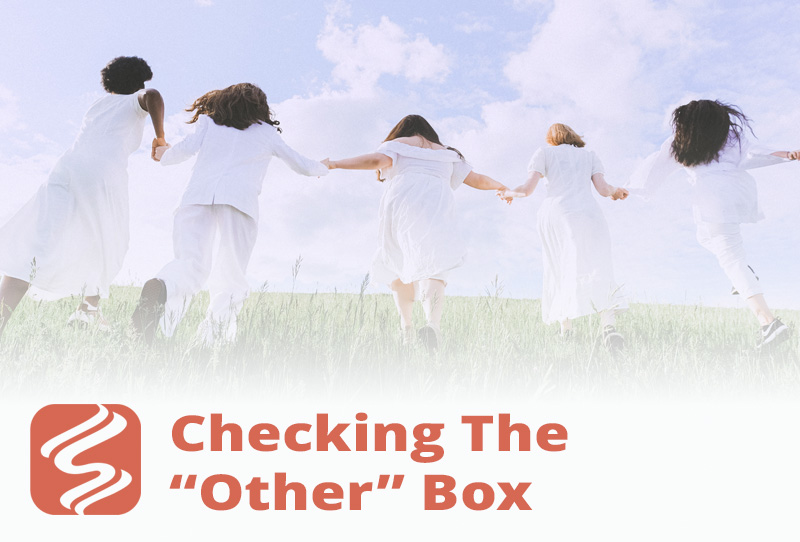
If you’ve ever filled out any kind of official form for insurance, a loan, a job application, the United States Census, or even to sign up for your COVID vaccine, you’ve probably filled out that section on “Race and Ethnicity.” And there are the usual categories: White, Hispanic, Black, Indigenous, East Asian, Pacific Islander… and Other.
I’ve been having to check the “Other” box my entire life.
In the big picture, this isn’t the worst thing in the world when it comes to race issues. But it’s frustrating. Because it makes me feel like my background and culture isn’t seen or recognized. People like me are expected to either claim to be “white”—which we’re not—or be content with not being defined at all.
And even now that people and organizations and institutions are talking more and more about inclusion (which they should be) I and people like me still don’t have a box. It feels so outdated.
I grew up being “Other.” I knew that I was different from the other kids in my predominantly white neighborhood. It’s hard not to feel out of place when your name is Suhaila. And your dad’s name is Ardeshir. And your mom’s name is Guiseppina Carmela. And your last name is Salimpour… not Smith or Williams or Johnson.
Back when I was little, if I told people where my dad’s family was from, they wouldn’t have any idea where I was talking about. The Middle East was just some exotic, faraway place.
Today, though, I don’t feel like there’s an excuse. The United States has been at war in the region in some capacity for over 20 years. We’ve had troops stationed there for decades. And in the news media, people from the Middle East are still seen as the “bad guys.”
And I know that Arabs, Persians, and other people from the region have been wanting a box of their own, because we’re not regarded as the “norm” or the majority. We’re not white, a fact made abundantly clear over and over again, with travel bans, harmful media stereotypes, discrimiation and slurs, and even hate crimes against Middle Eastern and Muslim people.
It’s been difficult to see my daughter go through the same realization, being both Persian and Arab herself.
When she was four, I was driving her home from pre-school and she asked me, “Mom, are we white?” And I pulled the car over to try to explain to her that we aren’t. This was only a year or so after September 11, 2001, so I had to make sure that she knew her heritage, but also that she was safe. And imagine trying to teach a four-year-old how to say “Middle Eastern.”
It wasn’t until 2019, when Isabella was just turning 21, when we went to Egypt that she felt at least some kind of representation. The women on the billboards looked way more like her than the ones back in the United States. The closest we get here is maybe the Kardashians… which, no shame, but Isabella’s priorities are a lot different!
So, my daughter, too, will be “Other,” so long as administrators and bureaucrats refuse to acknowledge that being from West Asia, North Africa, or even Central Asia, is a unique and distinct identity.
And a lot of us, especially me, are really tired of being “Other.”
The original blog was published in the Salimpour School blog on March 13, 2021.





